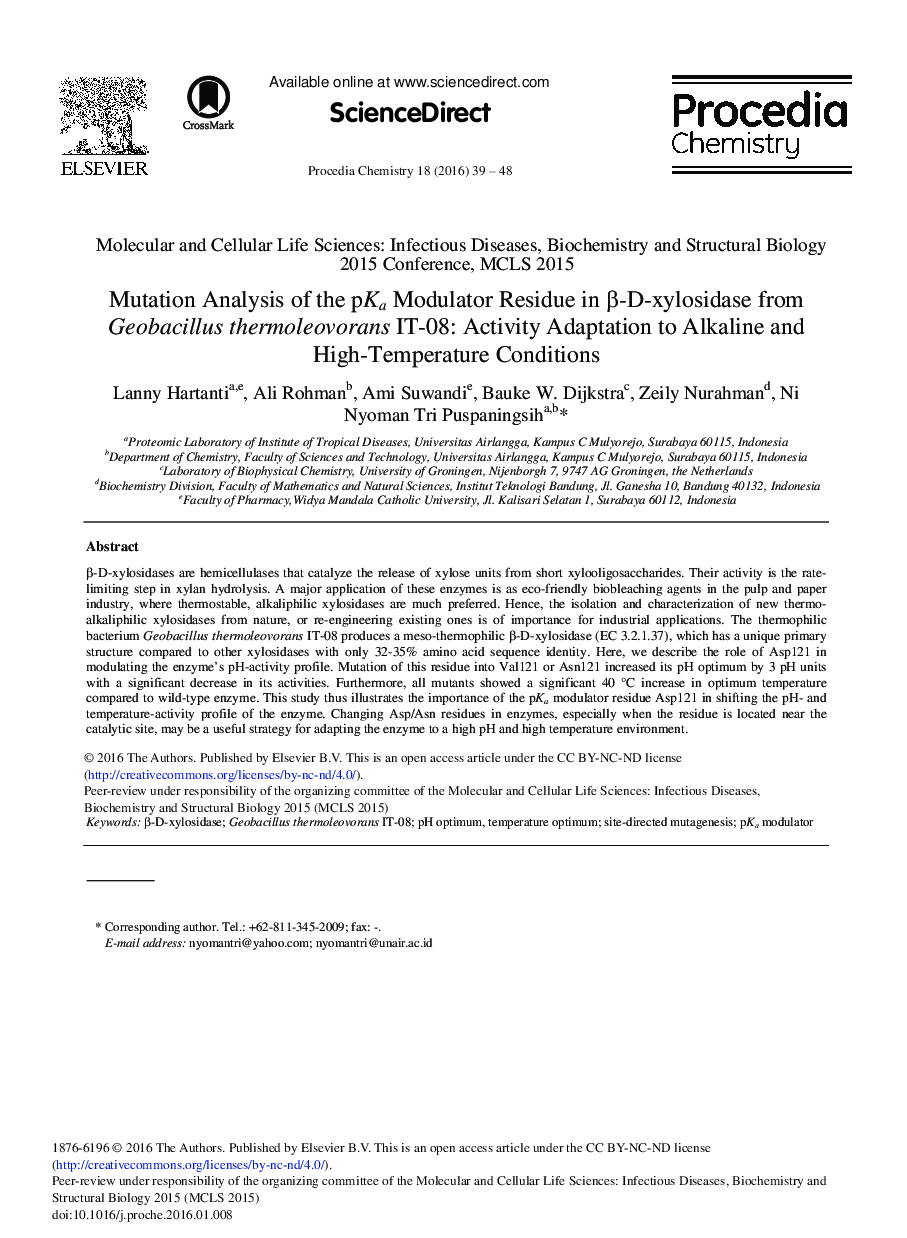| کد مقاله | کد نشریه | سال انتشار | مقاله انگلیسی | نسخه تمام متن |
|---|---|---|---|---|
| 239941 | 466236 | 2016 | 10 صفحه PDF | دانلود رایگان |

β-D-xylosidases are hemicellulases that catalyze the release of xylose units from short xylooligosaccharides. Their activity is the rate-limiting step in xylan hydrolysis. A major application of these enzymes is as eco-friendly biobleaching agents in the pulp and paper industry, where thermostable, alkaliphilic xylosidases are much preferred. Hence, the isolation and characterization of new thermo-alkaliphilic xylosidases from nature, or re-engineering existing ones is of importance for industrial applications. The thermophilic bacterium Geobacillus thermoleovorans IT-08 produces a meso-thermophilic β-D-xylosidase (EC 3.2.1.37), which has a unique primary structure compared to other xylosidases with only 32-35% amino acid sequence identity. Here, we describe the role of Asp121 in modulating the enzyme's pH-activity profile. Mutation of this residue into Val121 or Asn121 increased its pH optimum by 3 pH units with a significant decrease in its activities. Furthermore, all mutants showed a significant 40 °C increase in optimum temperature compared to wild-type enzyme. This study thus illustrates the importance of the pKa modulator residue Asp121 in shifting the pH- and temperature-activity profile of the enzyme. Changing Asp/Asn residues in enzymes, especially when the residue is located near the catalytic site, may be a useful strategy for adapting the enzyme to a high pH and high temperature environment.
Journal: Procedia Chemistry - Volume 18, 2016, Pages 39-48